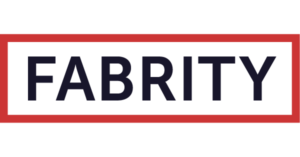In today’s web development landscape, choosing the right framework or technology stack can make all the difference to the success of your project. Two options worth considering are Blazor and React. They are both used to build modern web apps, but there are considerable differences between them you need to bear in mind when choosing a web development framework.
Blazor—overview
Blazor is a framework that allows developers to write web applications using C# and Razor syntax. Blazor was developed as a solution to the problem of having to write both client-side and server-side code in separate languages. It started as an experimental web UI framework created by Microsoft in 2017. Blazor uses WebAssembly, a technology that enables running compiled code in the browser to execute C# code without a server-side component.
Blazor gained official support from Microsoft in 2018, when it was announced as part of the ASP.NET Core 3.0 roadmap. Since then, Microsoft has released several versions of Blazor, including Blazor Server, Blazor WebAssembly, and Blazor Hybrid. Blazor is now considered a stable and production-ready framework for building web applications with .NET.
React—overview
React is a framework that allows developers to write web apps using JavaScript and JSX. It was developed as a solution to the problem of having to write interactive user interfaces in JavaScript. React is a JavaScript library that adheres to the declarative programming paradigm.
React was created by Facebook as an internal project in 2011. It was made open source by Facebook in 2013 and quickly gained popularity among developers and companies thanks to its component-based architecture and efficient rendering capabilities. Facebook has continued to maintain and improve React, adding new features. It is now one of the most widely used JS frameworks for building web applications with JavaScript.
A web application security checklist for every stage of development
Micro frontends: pros and cons
Fluent UI
Progressive web apps (PWA)—a gentle introduction
React best practices for web development
React vs React native—which one is better for your business
What is the Electron software framework?
15 reasons why Drupal is a leading CMS choice in 2024Blazor vs. React—architecture and language diversity
Developing a Blazor app—C# and Razor
Blazor allows developers to write web applications using the C# programming language and Razor syntax, which is a templating language that combines HTML and C# code. Blazor uses a component-based architecture where each component is a reusable piece of UI logic that can render HTML, handle user events, and communicate with other components. Some of the advantages of using C# and Razor are:
- C# is a mature, powerful, and expressive programming language that supports object-oriented, functional, and asynchronous programming paradigms.
- Razor provides a concise and intuitive way to mix HTML and C# code, with features such as tag helpers, partial views, and directives.
- Blazor is compatible with the .NET ecosystem, which means that developers can leverage existing libraries, tools, and frameworks, such as ASP.NET Core, Visual Studio, and Azure.
React: JavaScript and JSX
React is a library that helps developers create user interfaces using JavaScript and JSX, which is a syntax extension that allows developers to write HTML-like code in JavaScript. React uses a declarative approach where developers specify how the UI should look based on the state of the application. React also uses a virtual DOM, which is a lightweight representation of the real DOM that enables fast updates and rendering.
Some of the advantages of using JavaScript and JSX are:
- JavaScript is a versatile, dynamic, and widely used programming language that runs on all browsers and platforms.
- JSX provides a familiar and expressive way to write HTML in JavaScript, with features such as custom components, props, states, hooks, and life cycle methods.
- React is compatible with existing web technologies, such as HTML, CSS, SVG, and web APIs. It also has a large and active community that provides many libraries, tools, and JS frameworks such as Redux, Next.js, or Material UI.
Blazor vs. React—component model
Blazor and React both use a component-based approach to create reusable, interactive UI elements. Let us take a closer look at the component model of Blazor and React, focusing on component structure and life cycle, data binding, and event handling.
Developing a Blazor app—components and Razor syntax
Blazor components are .NET classes that inherit from the ComponentBase class and have a. razor file extension. They use Razor syntax, which is a combination of HTML and C#, to define the UI markup and logic. Blazor components support data binding and event handling using C# expressions and directives. Data binding allows the UI to reflect the state of the component, and event handling allows the component to respond to user actions.
Blazor components have a life cycle that consists of several methods that are invoked at different stages of rendering and updating the UI. This means that each component goes through specific stages that include creation, initialization, updating, and disposal. Each of them has its own life cycle methods that are called as needed.
React—components and JSX
React components are JavaScript functions or classes that accept input data and return JSX (a syntax extension that looks like HTML) elements that describe the UI. The JSX syntax is a combination of HTML and JavaScript used to define the UI markup and logic.
React components have a life cycle that consists of several methods that are invoked at different stages of mounting, updating, and unmounting the UI. React components support data binding and event handling using JavaScript expressions and props (input data). Unlike Blazor, React does not support two-way data binding by default, but it can be achieved using third-party libraries such as Redux.
Blazor vs. React—state management
Both Blazor and React have various ways to manage the state of the components and the data flow in the application. In either of them it is possible to use both native and third-party solutions.
Developing a Blazor app—state management solutions
Blazor has two hosting models: server-side and client-side. In server-side Blazor, the state of the components is maintained on the server and updated via SignalR. In client-side Blazor, the state of the components is maintained on the browser and updated via JavaScript.
The built-in solutions for state management in Blazor include: CascadingValue, which can provide a value to all its descendants without using parameters; and EventCallback, which can be used to trigger a UI update on the parent component when something changes on the child component.
Third-party solutions for state management in Blazor include: Fluxor, which is a library that implements the Flux (a unidirectional data flow architecture) pattern; and Blazor-State, another library, which implements the Mediator (a behavioral design pattern that defines an object that encapsulates how a set of objects interact) pattern for Blazor apps.
React—state management solutions
React uses a virtual DOM to render components and update them efficiently when the state changes. It has two types of components: class components and function components. The former have a state object that can be updated using the setState method, while the latter have hooks that can be used to add states and other features.
The built-in solutions for state management in React include: useState—a hook that allows you to add a local state variable to a function component; useEffect—a hook that allows you to synchronize a component with an external system; and useContext—a hook that allows you to access data from a context object, which can provide a value to all its descendants without using props.
The third-party solutions for state management in React include: Redux—a library that implements the aforementioned Flux pattern for React and has three principles: a single source of truth, state is read-only, and changes are made with pure functions; and MobX, which is a library that implements reactive programming, a paradigm that deals with data streams and propagation of change.
Blazor vs. React—performance
For obvious reasons, performance can be the make or break for modern web apps and app builders. So, let us look at Blazor and React from that perspective.
Developing a Blazor app—WebAssembly and server-side rendering
WebAssembly, which allows developers to write C# code that runs in the browser, is a binary format that can be executed by the browser at near-native speed. This means that Blazor can leverage the power of the .NET framework and C# without relying on JavaScript or plugins. WebAssembly can run complex computations faster than JavaScript, which can improve the user experience and responsiveness of the web app.
However, WebAssembly also has some limitations, such as the size of the downloaded files, the app startup time, and compatibility with older browsers. To compensate for these issues, Blazor Server offers a server-side rendering mode, where the C# code runs on the server and UI updates are sent to the browser using SignalR. Blazor Server apps can reduce the download size and improve compatibility with modern web browsers, but it also introduces some latency and dependency on the network connection.
Blazor apps—optimization
To optimize the performance of Blazor apps, developers use some of the following techniques:
- Ahead-of-Time (AOT) compilation—to reduce the download size and startup time of WebAssembly apps.
- Lazy loading—to defer loading of some assemblies until they are needed.
- Prerendering—to render the initial UI on the server and send it to the browser as static HTML.
- Caching and compression—to reduce the network bandwidth and latency.
- Component virtualization—to render only the visible items in a list or grid.
React—virtual DOM and client-side rendering
React uses a concept called virtual DOM, which is an in-memory representation of the real DOM. React compares the virtual DOM with the previous state and updates only the changed parts in the real DOM. This allows React to avoid unnecessary re-rendering and improves the performance of the web app. It can enable fast and easy UI updates without affecting the state or logic of the app.
However, virtual DOM also has some drawbacks, such as the memory overhead, the complexity of debugging, and the potential for performance bottlenecks. Like Blazor, React also offers a server-side rendering mode to compensate for some of the problems. This can improve SEO and initial loading time for the client-side applications and web app, but it also requires additional configuration and synchronization between the server and client.
React app—optimization
There are a few ways to make good React applications. As far as optimization goes, here are some of the techniques that can be used:
- Code splitting, to divide the app into smaller chunks that can be loaded on demand.
- Hydration, to attach event listeners to the static HTML rendered by the server.
- Memoization, to speed up the render process by caching and reusing the results of expensive function calls.
- Hooks or custom components, to avoid unnecessary re-rendering or state updates.
Blazor vs. React—ecosystem and community
Both frameworks have a rich ecosystem of libraries, tooling, and community support that can help developers build their applications faster and easier.
Developing a Blazor application—libraries, tooling, and community support
There are a number of open-source tools for popular libraries and extensions for Blazor, such as Blazorise (provides Bootstrap, Bulma, Ant Design, and Material UI components), MatBlazor (implements Material Design components), Blazored (a collection of libraries that provide various functionalities), and Fluxor (implements the Flux/Redux pattern for state management). Developers working with Blazor can also use tools such as Visual Studio (the official IDE for developing Blazor applications), Visual Studio Code, or the Blazor WebAssembly Debugging Extension.
Other than the official Blazor documentation, developers also have access to community resources such as Awesome Blazor (a curated list of libraries, tutorials, samples, videos, podcasts, etc.) and Blazor University (an unofficial documentation website). There is also, obviously, copious information on Stack Overflow and Reddit.
React—libraries, tooling, and community support
Some of the popular libraries and extensions for React include:
- Redux, which implements the Flux/Redux pattern for state management;
- Create React App, which sets up a modern React project with no configuration;
- React Router—a JavaScript framework that allows you to handle client and server-side routing in React applications;
- Material UI (MUI)—a component library that features the implementation of Google’s Material Design system.
- Bootstrap—an open-source frontend toolkit that contains HTML, CSS and JavaScript-based design templates for typography, forms, buttons, navigation, and other interface components;
- Tailwind—an open-source CSS library providing a list of utility CSS classes that can be used to style each element.
Aside from Chrome DevTools—the official developer tools for Chrome that support debugging React applications in the browser—developers working on React app development can use tools such as Create React App (a CLI tool that sets up a project with no configuration) and React Developer Tools (another Chrome extension).
They can also refer to the official documentation or Awesome React—a curated list of resources on GitHub.
Blazor vs. React—learning curve
Blazor is a framework that allows developers to write web applications using C# and HTML. Therefore, for developers who already have experience with these languages, it can be a natural choice for web development, as they can leverage their existing skills and knowledge and use familiar tools such as Visual Studio and NuGet. Furthermore, existing .NET libraries and components can be reused in Blazor applications.
React, on the other hand, allows developers to write web applications using JavaScript and JSX, so it benefits from the large and vibrant JavaScript community, which provides a lot of resources and libraries for various scenarios. React can also offer a smooth learning curve for developers who already have experience with JavaScript. They can use their existing skills and knowledge and familiar tools such as VS. Code and npm, as well as the many available JavaScript libraries and components.
Blazor vs. React—transitioning from other languages/frameworks
For developers who are coming from other languages or frameworks, Blazor can be a steep learning curve. They need to learn not only the Blazor framework itself, but also the C# language and the .NET ecosystem. React, on the other hand, can be a more moderate learning curve for developers transitioning from other systems. However, they will need to learn the React framework itself, as well as the JavaScript language and how to use the JavaScript tools and JS libraries, such as VS. Code, npm, Babel, Webpack, Redux, etc.
Blazor vs. React app development—use cases and industry adoption
Let us look at scenarios where Blazor can be a good choice for enterprise applications and for integration with existing .NET infrastructure. React can be a good choice for web applications and progressive web apps (PWAs) for integration with modern web development workflows.
Since React is an older and better-known technology, it is more often used by industry giants such as Facebook and Instagram (obviously), Netflix, Airbnb, Dropbox, and Uber, not to mention numerous smaller companies who use React for their web development needs.
Blazor, though newer, has also seen some interesting use cases.
Blazor use cases
- GE Digital developed FlightPulse, an app that helps Qantas pilots improve safety and efficiency on every flight by providing data and analytics.
- The Postage is a startup that helps people plan for the end of their lives. They used .NET, including Blazor and Xamarin, to do full-stack development across the web, backend services, and mobile applications—all using C#—resulting in a rapid time to market.
- ShoWorks Auction is a company that provides entry and back-office software for state and county fairs in North America. They used .NET and Blazor to build a web application for hosting livestock auctions online.
- Allegiance Consulting, a South African fintech, used Blazor technology to develop an engagement application for one of their larger clients.
- Zero Friction, which provides metering and billing solutions for heat suppliers in the energy sector, used Blazor to code their customer-facing portal.
Blazor vs. React: a summary of key differences
One of the main differences between Blazor and React is the languages they use. Blazor is based on C# and Razor syntax, which are familiar to many .NET developers. React, on the other hand, uses JavaScript, which is the most widely used scripting language on the web. If you are comfortable with either of them, pick Blazor or React accordingly, as this will allow you to use your existing skills and tools.
Both Blazor and React have advantages and disadvantages in terms of performance. Blazor can offer faster initial loading times than React but also has a larger bundle size than React, as it needs to include the .NET runtime and libraries. Blazor Server compensates for this and can offer faster rendering times than React, as it does not need to send data to the browser. However, it also has a higher latency than React, as it depends on a persistent connection with the server.
React can offer better performance than Blazor in some scenarios, as it uses a virtual DOM to update only the changed parts of the UI. However, React also has some drawbacks, such as memory leaks or unnecessary re-rendering if not optimized properly.
Blazor vs. React app development—which to choose?
Blazor and React are both powerful frameworks for building Single Page Applications (SPAs), but they have different strengths and weaknesses that you should consider before choosing one over the other.
- Team expertise. If your team is already familiar with C# and the .NET ecosystem, then Blazor might be the better choice. On the other hand, if your team is already familiar with JavaScript and related libraries, then React might be the more suitable option.
- Project requirements. Blazor might be better if you need to integrate with existing .NET infrastructure. On the other hand, if you need to develop web applications and PWAs, then React might be the better choice.
- Long-term maintainability. React might be a better choice from this point of view, thanks to its large community and ecosystem support.
You may also want to read more on our blog about the differences between Blazor and Angular.











